先上效果,视频敬上:
字符舞:

源代码:
video_2_code_video.py
|
1
2
3
4
5
6
7
8
9
10
11
12
13
14
15
16
17
18
19
20
21
22
23
24
25
26
27
28
29
30
31
32
33
34
35
36
37
38
39
40
41
42
43
44
45
46
47
48
49
50
51
52
53
54
55
56
57
58
59
60
61
62
63
64
65
66
67
68
69
70
71
72
73
74
75
76
77
78
79
80
81
82
83
84
85
86
87
88
89
90
91
92
93
94
95
96
97
98
99
100
101
102
103
104
105
106
107
108
109
110
111
112
113
114
115
116
117
118
119
120
121
122
123
124
125
126
127
128
129
130
131
132
133
134
135
136
137
138
139
140
141
142
143
144
145
146
147
148
149
150
151
152
153
154
155
156
157
158
159
160
161
162
163
164
165
166
167
168
169
170
171
172
173
174
175
176
177
178
179
180
|
import argparseimport osimport cv2import subprocessfrom cv2 import videowriter_fourccfrom pil import image, imagefont, imagedraw# 命令行输入参数处理# aparser = argparse.argumentparser()# aparser.add_argument('file')# aparser.add_argument('-o','--output')# aparser.add_argument('-f','--fps',type = float, default = 24)#帧# aparser.add_argument('-s','--save',type = bool, nargs='?', default = false, const = true)# 是否保留cache文件,默认不保存class video2codevideo: def __init__(self): self.config_dict = { # 原视频文件 "input_file": "video/test.mp4", # 中间文件存放目录 "cache_dir": "cache", # 是否保留过程文件。true--保留,false--不保留 "save_cache_flag": false, # 使用使用的字符集 "ascii_char_list": list("01b%8&wm#*oahkbdpqwmzo0qlcjuyxzcvunxrjft/\|()1{}[]?-_+~<>i!li;:oa+>!:+. "), } # 第一步从函数,将像素转换为字符 # 调用栈:video_2_txt_jpg -> txt_2_image -> rgb_2_char def rgb_2_char(self, r, g, b, alpha=256): if alpha == 0: return '' length = len(self.config_dict["ascii_char_list"]) gray = int(0.2126 * r + 0.7152 * g + 0.0722 * b) unit = (256.0 + 1) / length return self.config_dict["ascii_char_list"][int(gray / unit)] # 第一步从函数,将txt转换为图片 # 调用栈:video_2_txt_jpg -> txt_2_image -> rgb_2_char def txt_2_image(self, file_name): im = image.open(file_name).convert('rgb') # gif拆分后的图像,需要转换,否则报错,由于gif分割后保存的是索引颜色 raw_width = im.width raw_height = im.height width = int(raw_width / 6) height = int(raw_height / 15) im = im.resize((width, height), image.nearest) txt = "" colors = [] for i in range(height): for j in range(width): pixel = im.getpixel((j, i)) colors.append((pixel[0], pixel[1], pixel[2])) if (len(pixel) == 4): txt += self.rgb_2_char(pixel[0], pixel[1], pixel[2], pixel[3]) else: txt += self.rgb_2_char(pixel[0], pixel[1], pixel[2]) txt += '\n' colors.append((255, 255, 255)) im_txt = image.new("rgb", (raw_width, raw_height), (255, 255, 255)) dr = imagedraw.draw(im_txt) # font = imagefont.truetype(os.path.join("fonts","汉仪楷体简.ttf"),18) font = imagefont.load_default().font x = y = 0 # 获取字体的宽高 font_w, font_h = font.getsize(txt[1]) font_h *= 1.37 # 调整后更佳 # imagedraw为每个ascii码进行上色 for i in range(len(txt)): if (txt[i] == '\n'): x += font_h y = -font_w # self, xy, text, fill = none, font = none, anchor = none, # *args, ** kwargs dr.text((y, x), txt[i], fill=colors[i]) # dr.text((y, x), txt[i], font=font, fill=colors[i]) y += font_w name = file_name # print(name + ' changed') im_txt.save(name) # 第一步,将原视频转成字符图片 # 调用栈:video_2_txt_jpg -> txt_2_image -> rgb_2_char def video_2_txt_jpg(self, file_name): vc = cv2.videocapture(file_name) c = 1 if vc.isopened(): r, frame = vc.read() if not os.path.exists(self.config_dict["cache_dir"]): os.mkdir(self.config_dict["cache_dir"]) os.chdir(self.config_dict["cache_dir"]) else: r = false while r: cv2.imwrite(str(c) + '.jpg', frame) self.txt_2_image(str(c) + '.jpg') # 同时转换为ascii图 r, frame = vc.read() c += 1 os.chdir('..') return vc # 第二步,将字符图片合成新视频 def txt_jpg_2_video(self, outfile_name, fps): fourcc = videowriter_fourcc(*"mjpg") images = os.listdir(self.config_dict["cache_dir"]) im = image.open(self.config_dict["cache_dir"] + '/' + images[0]) vw = cv2.videowriter(outfile_name + '.avi', fourcc, fps, im.size) os.chdir(self.config_dict["cache_dir"]) for image in range(len(images)): # image.open(str(image)+'.jpg').convert("rgb").save(str(image)+'.jpg') frame = cv2.imread(str(image + 1) + '.jpg') vw.write(frame) # print(str(image + 1) + '.jpg' + ' finished') os.chdir('..') vw.release() # 第三步,从原视频中提取出背景音乐 def video_extract_mp3(self, file_name): outfile_name = file_name.split('.')[0] + '.mp3' subprocess.call('ffmpeg -i ' + file_name + ' -f mp3 -y ' + outfile_name, shell=true) # 第四步,将背景音乐添加到新视频中 def video_add_mp3(self, file_name, mp3_file): outfile_name = file_name.split('.')[0] + '-txt.mp4' subprocess.call('ffmpeg -i ' + file_name + ' -i ' + mp3_file + ' -strict -2 -f mp4 -y ' + outfile_name, shell=true) # 第五步,如果没配置保留则清除过程文件 def clean_cache_while_need(self): # 为了清晰+代码比较短,直接写成内部函数 def remove_cache_dir(path): if os.path.exists(path): if os.path.isdir(path): dirs = os.listdir(path) for d in dirs: if os.path.isdir(path + '/' + d): remove_cache_dir(path + '/' + d) elif os.path.isfile(path + '/' + d): os.remove(path + '/' + d) os.rmdir(path) return elif os.path.isfile(path): os.remove(path) return # 为了清晰+代码比较短,直接写成内部函数 def delete_middle_media_file(): os.remove(self.config_dict["input_file"].split('.')[0] + '.mp3') os.remove(self.config_dict["input_file"].split('.')[0] + '.avi') # 如果没配置保留则清除过程文件 if not self.config_dict["save_cache_flag"]: remove_cache_dir(self.config_dict["cache_dir"]) delete_middle_media_file() # 程序主要逻辑 def main_logic(self): # 第一步,将原视频转成字符图片 vc = self.video_2_txt_jpg(self.config_dict["input_file"]) # 获取原视频帧率 fps = vc.get(cv2.cap_prop_fps) # print(fps) vc.release() # 第二步,将字符图片合成新视频 self.txt_jpg_2_video(self.config_dict["input_file"].split('.')[0], fps) print(self.config_dict["input_file"], self.config_dict["input_file"].split('.')[0] + '.mp3') # 第三步,从原视频中提取出背景音乐 self.video_extract_mp3(self.config_dict["input_file"]) # 第四步,将背景音乐添加到新视频中 self.video_add_mp3(self.config_dict["input_file"].split('.')[0] + '.avi', self.config_dict["input_file"].split('.')[0] + '.mp3') # 第五步,如果没配置保留则清除过程文件 self.clean_cache_while_need()if __name__ == '__main__': obj = video2codevideo() obj.main_logic() |
运行环境:
操作系统:win10
版本:python 3.8.4
依赖库:pip install opencv-python pillow
管理员权限安装,我的已安装过,显示这样:

依赖应用: ffpmeg(下载直接解压、将bin目录加到path环境变量)

小白式运行(大佬请装瞎):
将上面的源代码命名video_2_code_video.py,在同一目录下新建文件夹video:
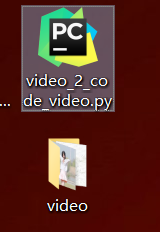
在video中放入要转换的原视频,命名test.mp4:
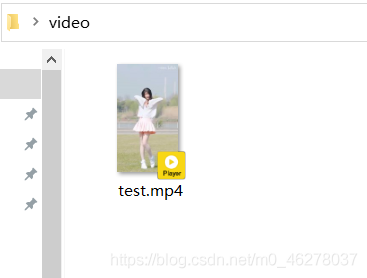
打开python3.8
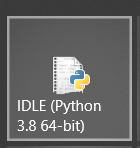
运行video_2_code_video.py,如下图显示表示正在运行:

会产生一些中间文件诸如:
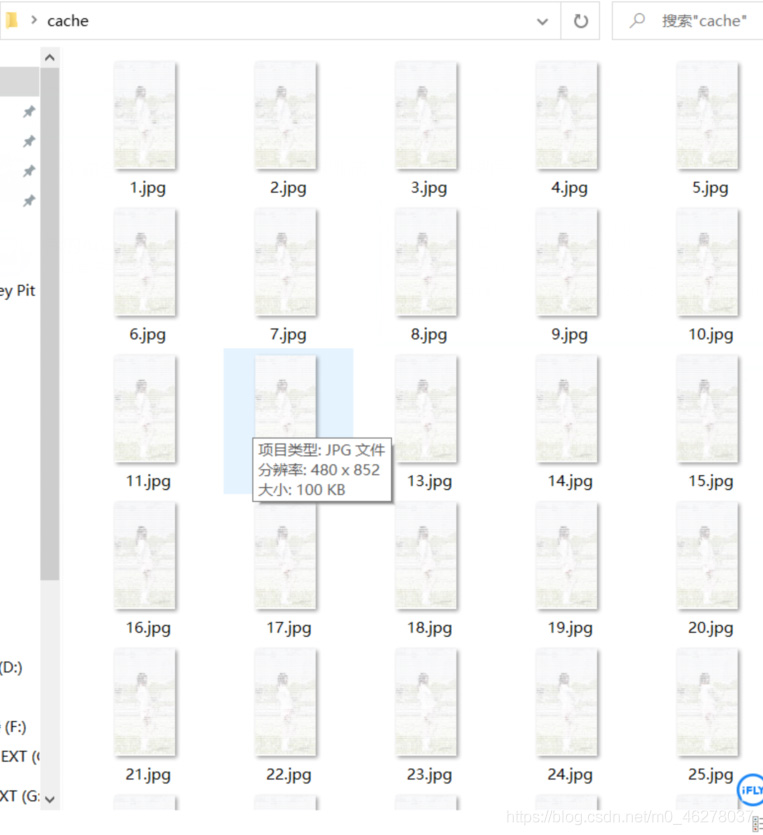

经过漫长的等待,终于得偿所愿:

test-txt.mp4就是所要的代码舞啦:
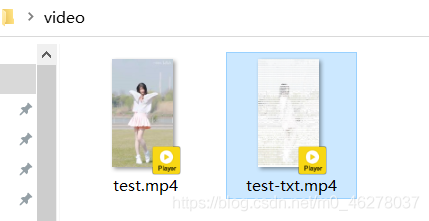
总结
到此这篇关于python抖音快手代码舞实现的文章就介绍到这了,更多相关python抖音快手代码舞内容请搜索服务器之家以前的文章或继续浏览下面的相关文章希望大家以后多多支持服务器之家!
原文链接:https://blog.csdn.net/m0_46278037/article/details/113731002










